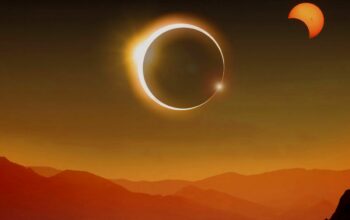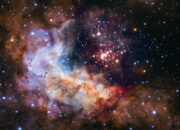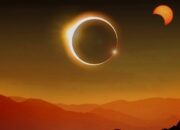Throughout the vast and intricate tapestry of the cosmos, the search for understanding the origins of the universe often leads astronomers and astrophysicists back to an indispensable inquiry: the study of first-generation stars, also known as Population III stars. These primordial celestial bodies, formulated from the primordial elements of hydrogen, helium, and trace amounts of lithium, are the progenitors of all subsequent star generations. An examination of these ancient stars promises not only a metamorphosis in our perspective of cosmic evolution but also piques our insatiable curiosity regarding the genesis of gasses, galaxies, and the very fabric of the universe itself.
First-generation stars emerged in the cosmic vacuum millions of years after the Big Bang, when the universe began transitioning from its initial homogeneous state. Understanding their formation is quintessential to comprehending how matter aggregated through gravitational clumping, eventually leading to star formation. The distinctive characteristics of Population III stars are derived from their primordial composition, lacking the heavier elements forged through prior stellar nucleosynthesis. This absence of metals profoundly influences both their physical properties and the mechanisms by which they evolve.
Researchers postulate that first-generation stars were colossal entities, often several hundred times more massive than the Sun. Their temperature and luminosity would have been exceedingly high, creating an environment conducive to rapid nuclear fusion processes that propagate energy throughout their structure. As these stars reached the zenith of their lifecycle, they inevitably succumbed to cataclysmic supernovae—events that not only obliterated the stellar remnants but also seeded the universe with the enriched elements necessary for the formation of subsequent generations of stars. Such phenomena established the metallicity in later cosmic structures, orchestrating the beautiful chaos of galaxy formation.
The quest to glimpse these enigmatic entities has underscored advancements in observational astronomy and cosmology. The next-generation telescopes, such as the James Webb Space Telescope, promise to shift dominantly our observational paradigms. By utilizing potent infrared capabilities, these instruments endeavor to probe deep into the universe, targeting epochs from earlier than what was previously achievable. Observing distant, faint objects with immense redshifts, astronomers can glimpse light emitted by Population III stars, which is key to unlocking their mysteries. The wavelengths that are prevalent today can offer integrated insights into how and when these stars emerged, evolved, and ultimately dispersed their nucleosynthetic by-products into the cosmos.
The pursuit of these primordial stars not only refines our knowledge of stellar evolution but also invites a host of inquiries into the formative processes of modern galaxies. With each discovery, a more nuanced understanding of chemical evolution and the intricate interstellar medium becomes apparent. Examining the residual elements formed from primordial supernovae in low-metallicity stars can significantly illuminate theories surrounding cosmic reionization, whereby the universe transitioned from a dark and opaque state to one of transparency as light from stars and galaxies permeated the space. This process was instrumental in shaping the early observable universe as we perceive it today.
Moreover, discovering and analyzing first-generation stars enables astronomers to explore the nature of dark matter and dark energy, those elusive components that allegedly constitute the majority of the universe. The existence of Population III stars offers profound implications for understanding gravity and forces that predispose the formation of baryonic matter in the cosmos. It poses vital questions about the impact of surrounding dark matter structures on star formation efficiency and the consequent evolution of galaxies. Insights gleaned from these investigations could redefine existing cosmological models, requiring a reevaluation of traditional paradigms.
Furthermore, the inquiry into first-generation stars could unveil fundamental mechanics driving the formation of exoplanetary systems. As the universe forges new structures from its primordial materials, understanding how variable metal contents stemming from these supernovae influence the formation of planets around later stars may elucidate the genesis of life as we know it. The connections between first-generation stars and planetary formation offer tantalizing evidence that the elemental building blocks necessary for life were dispersed throughout the universe in waves, raising questions about the conditions that may have led to life beyond our planet.
Studying first-generation stars not only enriches our existing frameworks but also permeates the realms of philosophical inquiry, asking profound questions about humanity’s place in the cosmos. The ongoing exploration into the cosmos instills a sense of wonder and ignites the imagination. Each observation, every spectral analysis, fuels the curiosity to understand our cosmic origins, compelling humanity to ponder the nature of existence itself. Ultimately, this pursuit underlines the axiom that the exploration of the universe, particularly through the lens of its primordial stars, is both a scientific endeavor and a profoundly human journey.
In conclusion, the tantalizing prospect of observing first-generation stars offers an enthralling shift in our cosmic perspective. They embody a critical juncture in understanding not merely where we have come from but also where we are headed. As advanced technologies usher in a new era of astronomical discovery, the elusive whispers of the first beings that illuminated our universe beckon with the promise of enlightenment. Each glimpse into this primordial realm serves not only as a rich well of scientific inquiry but also as an inspiring reminder of our ongoing quest for knowledge and understanding in an incomprehensibly vast universe.











